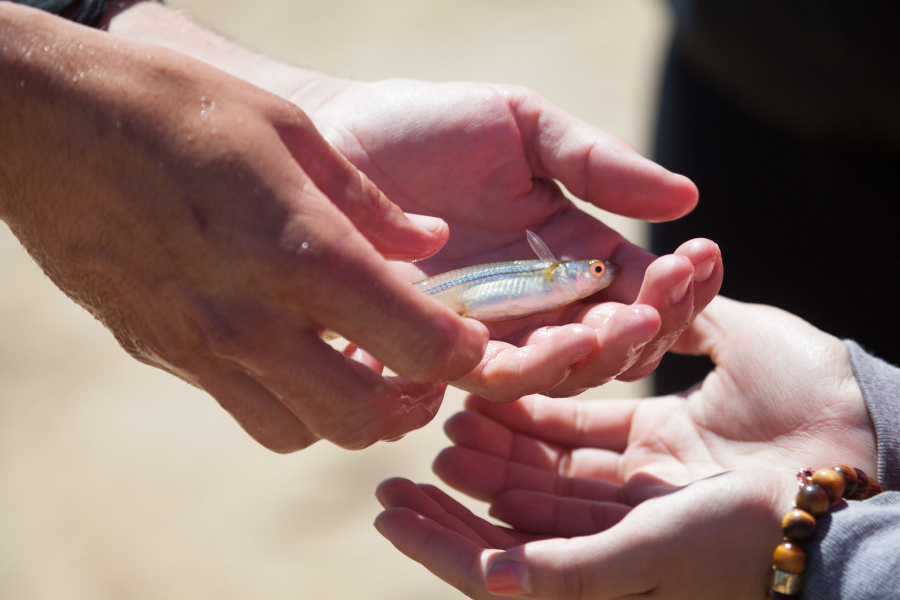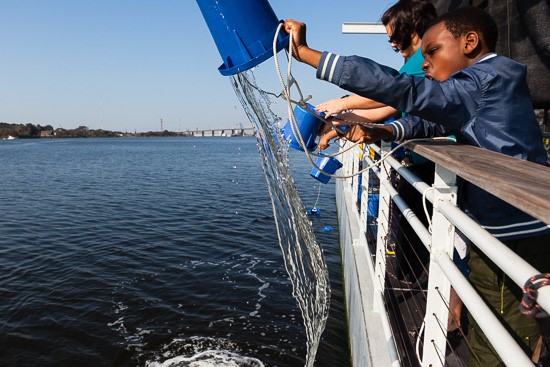Chesapeake Bay Environmental Literacy Summit: Education gets outside
Bay Program partners convene, work to ensure a new generation of research scientists and nature lovers

Nestled between Washington, D.C., and Baltimore, Maryland, the Patuxent Wildlife Research Center boasts native gardens, picturesque benches next to flowering trees that hum with bees, study sites for the center’s biologists and plenty of rivers, forests and walking trails for the public. Last Wednesday, the refuge played a role in ensuring a new generation of research scientists and nature lovers by hosting the Chesapeake Bay Program’s Leadership Summit on Environmental Literacy.
The summit centered on the environmental literacy outcome of the Chesapeake Bay Watershed Agreement, in which Bay Program partners—which include federal and state agencies, local governments, non-profit organizations, communities and academic institutions—committed to the goal to “enable every student in the region to graduate with the knowledge and skills to act responsibly to protect and restore their local watershed.”
Attendees were delegates from the education departments, environmental or natural resource departments and school districts of D.C., Delaware, Maryland, Pennsylvania, Virginia and West Virginia. Representatives from federal agencies, nonprofits, outdoor centers, and educational organizations throughout the Chesapeake Bay watershed joined in discussion and collaborated at each table.
Remarks from Nick DiPasquale, Director of the Chesapeake Bay Program, and Brad Knudsen, Patuxent Research Refuge Manager, kicked off the day. Both began by reminiscing spending sunrise-to-sunset childhood days playing outdoors, with Knudsen expressing concern over whether today’s children would be able to do the same.
“Most kids now experience the outdoors through sports,” Knudsen said. “Sports are great, but what are the odds that at 60 they’ll still be playing soccer? If they are exposed to birdwatching, nature hikes, [nature becomes] a lifelong love and activity.”

To give today’s children outdoor memories and ensure a robust outdoors in which to have them, education leaders from across the watershed shared stories and discussed how to foster success in each jurisdiction. “Me – We” is the handily descriptive pronunciation for Meaningful Watershed Education Experiences (MWEE), the formal environmental education component in place in elementary, middle and high schools and which has been shown to increase overall academic performance. MWEEs—which last weeks to months and morph from classroom learning to outdoor experiences and back again—give students a sense of place within the watershed as a whole, while providing real-world applications for science, math, history, reading and art.
The afternoon concluded with attendees discussing how best to tackle environmental literacy in their particular locality. A major component of environmental literacy is establishing a sense of the full watershed. Covering some 64,000 square miles, the Chesapeake Bay watershed stretches from New York down to Virginia and includes land-locked areas of Pennsylvania and West Virginia. A school in coastal Virginia might create a Bay-focused MWEE in partnership with a local nonprofit, while a class in rural Pennsylvania might work with a local farm, a conservancy and their conservation district to develop a sense of pollution prevention and groundwater protection on their own school grounds. Watershed protection works when people understand the interworking nature of the system and decide to act locally: each area taking pride in their own land, their own streams, their local community. Environmentally literate citizens result in healthier communities; healthier local communities result in a healthier bay.

Comments
There are no comments.
Thank you!
Your comment has been received. Before it can be published, the comment will be reviewed by our team to ensure it adheres with our rules of engagement.
Back to recent stories